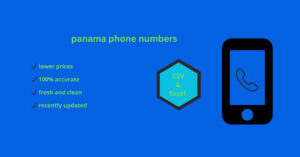These incredible bottlenecks often
Posted: Thu Dec 05, 2024 5:15 am
Unfortunately, this is a common scenario—many marketing teams often run into roadblocks when it comes to creating, publishing, and managing web content. According to our 2024 State of the Website report, 81% of marketing teams say website ownership is an ongoing challenge. 35% of companies say it takes two weeks or more to make a simple copyedit to their website.
Occur because a company's website is hard-coded or relies on a complex database. In both cases, content marketers must work with developers or outsourced support to create simple web experiences or make meaningful changes.
But regardless of the root cause, when the panama phone numbers development cycle or an external team must be involved in updating a website, content marketer performance can drop significantly in three important ways:

Speed: Creating and publishing content takes longer
Creativity: They often have to streamline their ideas to meet development timelines or requirements
Flexibility: They strive to be proactive and agile in responding to timely opportunities or market needs, such as adding new banners or landing pages
This lack of autonomy can be very frustrating for talented content marketers who know their work is suffering due to these technical and procedural limitations. For most, this is beyond their control, as marketing leaders further up the chain are often responsible for decisions around technology stacking.
Organizations that want to retain and empower great content marketers need to understand this need for autonomy and find better ways to equip their teams to work better.
Rethink your CMS
Learn why a cutting-edge enterprise CMS isn’t just a nice-to-have, it’s a must-have for your team.
Watch now↗
Watch now
How a visual-first, composable CMS puts content marketers in control of content
This is where a visual, composable CMS can play an important role. A powerful visual CMS enables designers and marketers to quickly deliver engaging content experiences using a visual editing interface and provides developers with the power of a flexible API to build custom front-end web experiences as needed.
Content marketers and the designers and writers they work with can use these visual-first platforms to build new layouts and styles, create or edit content, and publish directly to the web or share production-ready code. They no longer need to hand wireframes or diagrams to developers, submit tickets for simple copy changes, or spend budget on outsourced technical support. Likewise, developers can focus their valuable time on complex technical initiatives.
Occur because a company's website is hard-coded or relies on a complex database. In both cases, content marketers must work with developers or outsourced support to create simple web experiences or make meaningful changes.
But regardless of the root cause, when the panama phone numbers development cycle or an external team must be involved in updating a website, content marketer performance can drop significantly in three important ways:

Speed: Creating and publishing content takes longer
Creativity: They often have to streamline their ideas to meet development timelines or requirements
Flexibility: They strive to be proactive and agile in responding to timely opportunities or market needs, such as adding new banners or landing pages
This lack of autonomy can be very frustrating for talented content marketers who know their work is suffering due to these technical and procedural limitations. For most, this is beyond their control, as marketing leaders further up the chain are often responsible for decisions around technology stacking.
Organizations that want to retain and empower great content marketers need to understand this need for autonomy and find better ways to equip their teams to work better.
Rethink your CMS
Learn why a cutting-edge enterprise CMS isn’t just a nice-to-have, it’s a must-have for your team.
Watch now↗
Watch now
How a visual-first, composable CMS puts content marketers in control of content
This is where a visual, composable CMS can play an important role. A powerful visual CMS enables designers and marketers to quickly deliver engaging content experiences using a visual editing interface and provides developers with the power of a flexible API to build custom front-end web experiences as needed.
Content marketers and the designers and writers they work with can use these visual-first platforms to build new layouts and styles, create or edit content, and publish directly to the web or share production-ready code. They no longer need to hand wireframes or diagrams to developers, submit tickets for simple copy changes, or spend budget on outsourced technical support. Likewise, developers can focus their valuable time on complex technical initiatives.